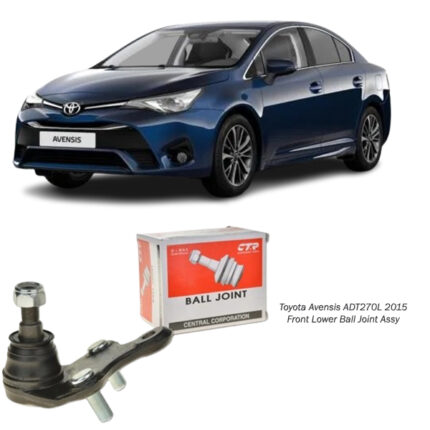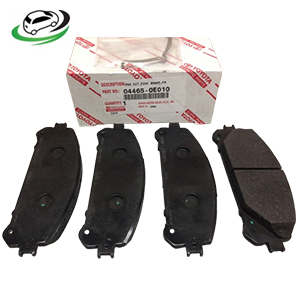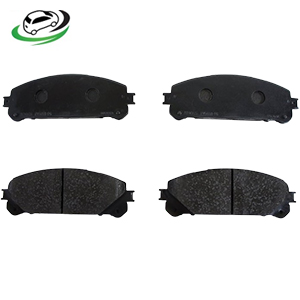-14%
Get Genuine Toyota Front Brake Pad Set 04465-48150
Brake pads are an essential component of a vehicle’s braking system. They are the friction material that presses against the brake rotors to slow down or stop the vehicle. Understanding brake pads’ structure, function, types, signs of wear, and maintenance is crucial for ensuring vehicle safety and performance.
Structure and Materials
Brake pads consist of several key components:
- Backing Plate: This metal plate provides structural support and a mounting surface for the friction material.
- Friction Material: This is the part of the brake pad that comes into contact with the brake rotor. It is made from various materials designed to withstand high temperatures and provide consistent braking performance.
- Shims and Insulators: These components reduce noise and vibration. They are typically made of rubber or metal and are placed between the backing plate and the friction material.
- Adhesives and Bonding Agents: These materials bond the friction material to the backing plate and must withstand extreme heat and pressure.
Types of Brake Pads
There are several types of brake pads, each with its characteristics and suitability for different driving conditions:
- Organic Brake Pads: Made from materials like glass, rubber, and Kevlar, these pads are softer and quieter but wear out faster and produce more brake dust.
- Semi-Metallic Brake Pads: Containing metal fibers, these pads offer better performance and durability but can be noisier and cause more wear on the rotors.
- Ceramic Brake Pads: Made from ceramic fibers and nonferrous materials, these pads provide excellent performance, produce less dust, and are quieter, but they tend to be more expensive.
- Low-Metallic NAO Brake Pads: These contain organic materials with small amounts of metal for better heat transfer. They offer good performance but can be noisier and produce more dust than ceramics.
Function
Brake pads are integral to the disc braking system, which is commonly used in modern vehicles. When the brake pedal is pressed, hydraulic fluid transmits force to the brake calipers, which squeeze the brake pads against the rotors. The friction between the pads and rotors slows the wheel’s rotation, thereby stopping the vehicle. This process converts kinetic energy into thermal energy (heat), which the braking system dissipates.
Signs of Wear and Maintenance
Brake pads wear down over time and must be regularly inspected and replaced to maintain braking performance and safety. Common signs of worn brake pads include:
- Squeaking or Squealing: This noise is often caused by a wear indicator, a small metal tab that contacts the rotor when the pad material is low.
- Grinding Noise: A grinding sound indicates that the pads are worn down completely, and the backing plate is making contact with the rotor.
- Increased Stopping Distance: Worn brake pads reduce braking efficiency, leading to longer stopping distances.
- Vibration or Pulsation: Uneven wear or damage to the pads or rotors can cause vibrations when braking.
Replacement Process
Replacing brake pads involves several steps:
- Safety Precautions: Ensure the vehicle is securely lifted and supported.
- Removing the Wheel: The wheel is removed to access the brake caliper and pads.
- Removing the Brake Caliper: The caliper is unbolted and carefully moved to access the brake pads.
- Removing the Old Pads: The worn brake pads are removed from the caliper bracket.
- Inspecting the Rotors: The rotors are checked for damage or wear and may need resurfacing or replacement.
- Installing the New Pads: New brake pads are installed, ensuring they are correctly positioned and secured.
- Reassembling the Caliper and Wheel: The caliper is reattached, and the wheel is put back on the vehicle.
- Testing: The brakes are tested to ensure proper installation and function.
Follow us on Facebook for more parts.



